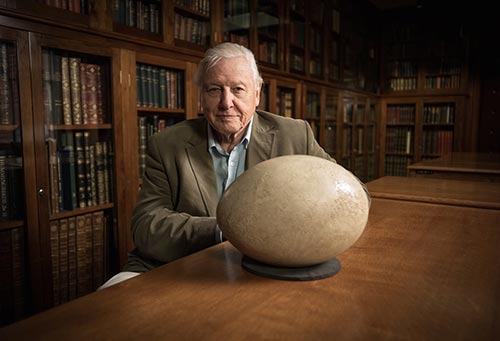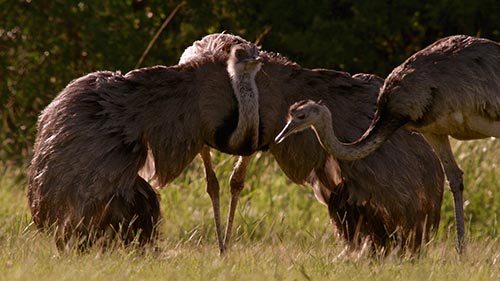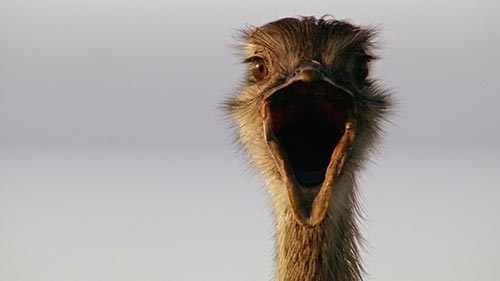Attenborough's Big Birds
For BBC Natural World and PBS/Nature

David Attenborough tells the story of a family of modern-day dinosaurs who are the Flintstones of the bird world: ostriches, emus, cassowaries, rheas and kiwis. These crazy-looking birds haven’t flown a day in their lives. They are the original flightless birds and the only ones whose skeletons make them incapable of flight.
Among their number is the fastest bird on land. One has dagger sharp talons, another killer thighs. Incredibly rare archive footage shows an adult ostrich outrun a team of cheetahs while a young ostrich is brought to its knees.
The success of this family of flightless birds is largely due to some bizarre breeding behaviour and very complicated relationships: males mating with multiple females; females mating with multiple males; fathers raising chicks that aren’t their own.

On the pampas of Argentina, the camera crew captured a rarely filmed fight between two adult rheas as well as a mating involving a surprisingly large and curly penis.
In the Australian outback, the tenacity and endurance of one emu father’s love helps to raise the next generation of walking oddballs.
Exactly how this family abandoned flight has been one of nature’s great mysteries. But now DNA from the bones of extinct and living flightless birds has revealed something very surprising indeed.

Because all the places in which our flightless birds now live were part of a super continent called Gondwanaland, it was once thought that perhaps they shared one common flightless ancestor that roamed all over that ancient land.
When, millions of years ago, Gondwanaland split up, populations of this common ancestor drifted into isolated positions and evolved in different ways.
But ancient bones tell a different story. They reveal that this ancestor of our flightless birds could fly. Our birds didn’t drift away from one another but instead flew across oceans to reach the far corners of the world. Only then did they independently lose the ability to fly.

It’s an amazing thought – this family of flightless birds lost their ability to fly independently and on several different occasions.
A family of flightless wonders.
Our Programmes